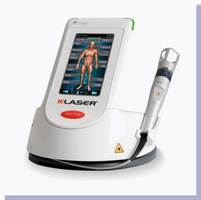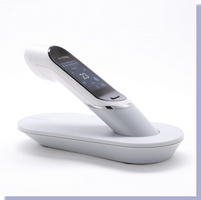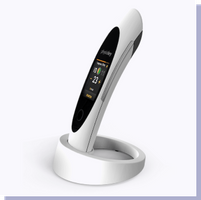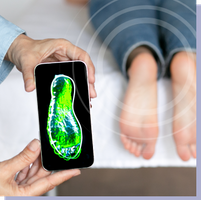The large increase in post-trauma victims following the events of October 7th requires effective solutions, and according to professionals, the phenomenon is expected to expand greatly after the war. Some of them suffer from more complex and severe post-trauma, which requires immediate assistance. There is treatment for complex post-trauma, and innovative technological treatment offers rapid and safe relief to sufferers.
Following the events of October 7th and the Iron Sword War, the evacuation of tens of thousands from their homes and the harm to many families due to the ongoing tension and endless reserve days – the Ministry of Defense predicts that by 2030 the number of mentally ill people in Israel is expected to increase by more than 170%. If on the eve of the war, about 11,000 mentally ill people were treated in the rehabilitation wing, according to the forecast, by the end of 2024 about 30,000 will have been treated there. More than 3,000 of those wounded in the war, about 29%, are dealing with mental injuries such as anxiety, depression, post-traumatic stress disorder, adjustment difficulties and communication difficulties.
This situation may be further aggravated, as according to trauma treatment experts, the post-traumatic stage only arrives when the situation calms down, when the daily functioning of %-10% of those suffering from the disease will be impaired over time. Furthermore, even those who were not in the line of fire, but “only” experienced missiles and alarms, people they know were killed or injured, or who experienced the difficult events through the media – may develop post-traumatic stress disorder. In extreme cases, complex post-traumatic stress disorder (C-PTSD) may also develop.
Post-traumatic stress disorder (PTSD), according to various studies conducted since the beginning of 2024, about a fifth of Israelis suffer from symptoms of PTSD – post-traumatic stress disorder. Symptoms include, among others, feelings of fear, anxiety and helplessness, blood pressure, rapid heartbeat, intrusive thoughts, increased arousal, flashbacks and memories of the traumatic event. Quite a few post-traumatic stress disorder sufferers try to avoid taking action or physically going to a place that could remind them of the event. All of this seriously impairs the functioning of those suffering from the disorder and their ability to lead a normal daily life.
What is complex post-traumatic disorder?
Unlike traditional PTSD, which usually results from a single traumatic event, complex PTSD (C-PTSD) is the definition of a serious mental health condition that results from ongoing or repeated exposure to traumatic situations, such as childhood abuse, domestic violence, human trafficking, or captivity. It causes a variety of symptoms, such as re-experiencing the trauma, avoiding reminders of the trauma, difficulty controlling emotions, self-harm, detachment from reality, and more.
A study conducted on American soldiers found that about 13% suffered from complex post-traumatic stress disorder. A study conducted in Israel found that about 2.6% suffered from complex post-traumatic stress disorder (along with 9% from post-traumatic stress disorder).
The causes of complex post-traumatic stress disorder
Complex PTSD can be caused by any type of long-term trauma. It usually involves situations where the victim has little control and is unable to escape. Long-term trauma can have a variety of effects that lead to complex PTSD. This is especially true if the trauma occurs in childhood, as it can disrupt the development of social skills and emotional behaviors. In addition, the child may think that the trauma is their fault, leading to long-term feelings of shame. A child who grows up in an abusive family will not learn how to manage their emotions appropriately.
The types of traumatic situations that can cause complex post-traumatic stress disorder include:
– Long-term psychological, physical, or sexual abuse or neglect
– Long-term exposure to domestic violence
– War, torture or kidnapping (hostages, prisoners of war, concentration camp survivors, refugees, cult members)
– Imprisonment
Because traumatic memories are not stored in the brain in the same way as other memories, this can lead to unexplained distress and other emotional and physical symptoms.
Symptoms of complex post-traumatic stress disorder
– Symptoms of “normal” post-trauma: nightmares, flashbacks of the nightmarish event, hypervigilance, avoidance of triggers related to the trauma, feelings of helplessness, high blood pressure and rapid heartbeat, intrusive thoughts.
Alongside them – symptoms of ongoing trauma:
* Strong emotions and difficulty controlling them, difficulty regulating emotions (deep sadness, outbursts of anger, along with emotional numbness)
* Persistent identity disturbances
* Self-harm and suicidal thoughts
* Negative self-perception: feeling helpless, guilty or ashamed, worthless.
* Problems maintaining healthy relationships: Some people avoid relationships altogether, while others engage in abusive relationships. There may be a lack of trust or fear of others, coupled with increased dependence on others or a tendency to tolerate abusive behaviors. The result: impaired family, social, professional, and educational functioning.
* Dissociation: a feeling of detachment from reality, the environment, or yourself, being in a dream.
* Physical symptoms such as chronic pain, chronic fatigue, and irritable bowel syndrome, or other physical symptoms without a clear medical cause.
Diagnosis of complex post-traumatic stress disorder
Post-trauma Complex was only recognized as a mental health condition in the early 1990s and was only included in the World Health Organization’s diagnostic manual in 2018. Its diagnosis requires the presence of a significant traumatic stressor (experiences that cause fear, helplessness, dissociation) over time that threatens the sufferer in an extreme way. Since the definition can mention other mental health problems, such as other forms of PTSD, depression, and borderline personality disorder, it is sometimes difficult to diagnose accurately.
In order to define the problem as complex post-trauma, a combination of three factors that characterize “normal” post-trauma is required – repeated experience of the traumatic event, avoidance of mentioning the trauma, and an experience of threat in the present – alongside three additional symptom clusters: problems with emotional regulation, negative self-image, and difficulties in creating and maintaining interpersonal relationships.
Treatment of complex post-traumatic stress disorder
Effective treatment for complex post-traumatic stress disorder usually requires a combination of therapeutic approaches tailored to its complexity:
Drug treatment: antidepressants, anti-anxiety medications, or mood stabilizers.
Mental health care: Long-term psychological or psychiatric treatment is designed to help the patient learn how to respond to traumatic symptoms and memories, restore their trust in others, and create healthy relationships. Among the treatments used: cognitive behavioral therapy (CBT), working through memories of the trauma using eye movements that help the brain better process the memories, dialectical behavioral therapy (DBT), which is designed to create a change in the patient’s perception of themselves and others and focuses on emotional regulation. Alongside these, support groups of people with similar syndromes are used.
Holistic practice : Complementary alternative therapies may help calm the mind, balance the nervous system, and reduce symptoms, which is why they are recommended by psychiatrists who treat post-traumatic stress disorder. Mindfulness, yoga, and similar practices help the patient reduce stress and reconnect with their body.
Treatment of complex post-traumatic stress disorder in Israel
The growing number of people suffering from post-traumatic stress disorder following the events of October 7th led to the implementation of innovative treatment at Avidor Medical Center.. Using technology Medkey , in the Q Room treatment rooms , uses electrotherapy technology – electrical stimulation used in the world of physiotherapy and designed to relieve pain, relax and strengthen muscles.
Treatment in the Q-rooms , and in particular the use of Medkey technology, has been found to be effective for PTSD sufferers. The treatment may help lower stress hormone levels and cope with the associated physiological and mental symptoms.
Since October 7, we at Avidor Medical have decided to recruit the Q-room team of experts in order to provide a solution for the treatment of the growing number of PTSD sufferers. The pain-focused treatment rooms incorporate electrotherapy technology (electrical stimulation) that helps regulate and balance the nervous system. This activity was done jointly with the teams in Australia and Germany, and an appropriate protocol was built for the treatment. At the central Q-room branch, we reached an impressive achievement of 65 percent of patients reporting benefit following the treatment they underwent.
The clinical picture obtained during and especially after treatment includes improvement in several areas:
- Pressure point release, in various contracted muscles. The patient changes his posture and positions his tense and contracted body to a more relaxed and natural position.
- Most patients feel a sense of calm and in many cases a certain decrease and stabilization in blood pressure and pulse has been measured.
- Patients reported an improvement in the depth and continuity of sleep .
- Homeostasis is created , meaning a state in which the physical and chemical conditions prevailing within the patient’s body are maintained at a stable level that is appropriate for its optimal activity, through biochemical-metabolic regulatory processes.
The short-term (two weekly treatments for four weeks are recommended) and non-invasive treatment brings the good news of assistance to those suffering from post-traumatic stress disorder in a unique and innovative way. For a consultation and appointment at one of the eight branches of Q Room nationwide call: 076-599-7427









